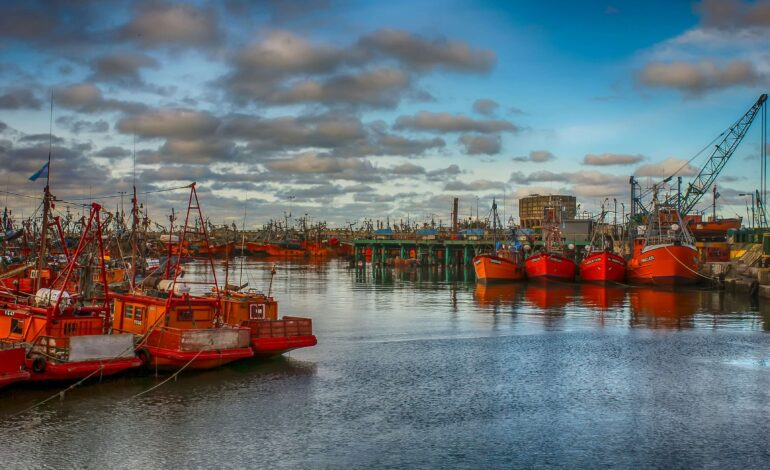
Advancements in maritime communication systems
Maritime communication systems are the lifeblood of the shipping industry, ensuring safe, efficient, and effective vessel operations worldwide. Over time, technological advancements have revolutionized these communication systems, driving significant improvements in navigation, safety, operational efficiency, and the overall sustainability of the maritime industry. This article explores the latest breakthroughs in maritime communication systems and how they are reshaping the industry.
The Journey of Maritime Communication
The maritime industry’s communication systems have evolved significantly, transitioning from simple methods like signal flags, Morse code, and basic radio transmissions to highly sophisticated digital systems. These early communication tools, though innovative for their time, were limited by their range, reliability, and capacity to convey information. The establishment of the Global Maritime Distress and Safety System (GMDSS) in the 1990s marked a crucial development, standardizing safety communications and improving emergency responses.
Today, maritime communication has embraced cutting-edge digital technologies, enabling high-speed, secure, and real-time communication across global networks. These advancements are revolutionizing the maritime sector, enhancing every aspect of operations, from navigation and safety to fleet management and environmental monitoring.
Satellite Communication: A Global Lifeline
One of the most transformative advancements in maritime communication is the adoption of satellite communication systems. Satellite technology has enabled ships to maintain constant communication with shore-based operations, regardless of their location on the planet. This has been especially beneficial for vessels operating in remote or challenging environments where traditional radio communication methods may fall short.
Modern satellite networks, such as Inmarsat and Iridium, offer high-speed internet connectivity, voice communications, and data exchange capabilities. These systems facilitate real-time vessel tracking, remote monitoring, and continuous communication with ports and other ships. The ability to transmit large volumes of data via satellite also supports the use of advanced navigation tools and the implementation of e-Navigation, which integrates various maritime communication systems to improve safety and operational efficiency.
Automatic Identification Systems (AIS): Enhancing Maritime Safety
The Automatic Identification System (AIS) has become a vital component of modern maritime communication. AIS uses transponders on ships to broadcast information such as vessel identity, position, speed, and course to nearby ships and shore stations. This system significantly enhances situational awareness, reducing the risk of collisions and improving overall maritime safety.
AIS data is essential for traffic management, search and rescue operations, and environmental monitoring. By providing accurate, real-time information about vessel movements, AIS helps maritime authorities and researchers analyze shipping routes, study traffic patterns, and assess the environmental impact of maritime activities.
VSAT Technology: Bringing Broadband to the High Seas
The advent of Very Small Aperture Terminal (VSAT) technology has revolutionized maritime communication by providing ships with high-speed internet connectivity at sea. VSAT systems use small satellite dishes to offer broadband services, enabling a wide range of applications, from real-time weather updates to remote diagnostics and crew welfare initiatives.
VSAT technology allows ships to remain connected to global networks, facilitating continuous communication with headquarters, access to up-to-date information, and the ability to transmit large files. This connectivity is crucial for efficient operations, as it allows for better coordination between ship and shore-based teams, enhancing decision-making processes. Additionally, VSAT improves the quality of life for crew members by offering internet access, helping to reduce isolation and improve morale during long voyages.
Digital Selective Calling (DSC): Streamlining Emergency Communication
Digital Selective Calling (DSC) is a significant advancement in maritime communication, particularly for emergency situations. Part of the GMDSS, DSC operates over VHF, MF, and HF radio frequencies and allows for automated distress alerts and routine communications between ships and shore stations.
DSC streamlines emergency communication by enabling the rapid transmission of distress signals, which automatically include the vessel’s location and identification. This capability ensures that help can be dispatched swiftly, even if the crew cannot send a voice message. DSC also enhances routine communications, reducing the risk of miscommunication and improving the overall efficiency of maritime operations.
The Internet of Things (IoT) and Smart Ships
The integration of the Internet of Things (IoT) into maritime communication systems is leading to the emergence of “smart ships.” IoT involves connecting various onboard devices and sensors to a central network, enabling real-time monitoring and data exchange. This interconnectedness allows ships to autonomously manage many of their functions, from navigation to maintenance.
IoT-powered communication systems enable continuous monitoring of critical ship components, such as engines, fuel systems, and environmental controls. The data collected from these systems can be transmitted to shore-based facilities for analysis, optimizing operations, predicting maintenance needs, and improving fuel efficiency. IoT is also a key enabler of autonomous vessels, which rely on continuous data flow and sophisticated algorithms to operate without direct human intervention.
Overcoming Challenges and Future Trends
While these advancements have brought substantial benefits to maritime communication, they also present challenges. The increasing reliance on digital systems raises cybersecurity concerns, as ships and maritime infrastructure become more vulnerable to cyber threats. Ensuring robust cybersecurity measures is essential to protect sensitive data and maintain the safety of vessels.
Another challenge is the need for standardization across the industry. The rapid development of new communication technologies risks creating a fragmented landscape where systems and protocols are not fully compatible. Developing and enforcing international standards for maritime communication is crucial to ensure interoperability and seamless information exchange.
Looking to the future, the integration of artificial intelligence, machine learning, and big data analytics will further enhance maritime communication systems. These technologies will improve predictive capabilities, streamline decision-making, and support the continued development of autonomous vessels. Additionally, advancements in quantum communication and 5G technology could further transform maritime communication, offering even faster and more secure data transmission.
Conclusion
The recent advancements in maritime communication systems have fundamentally changed how the maritime industry operates. From satellite communication and AIS to IoT and smart ships, these innovations are pushing the industry toward greater connectivity, efficiency, and safety. As the maritime sector continues to embrace these technological breakthroughs, addressing the challenges of cybersecurity and standardization will be key to fully realizing the potential of next-generation communication systems.





